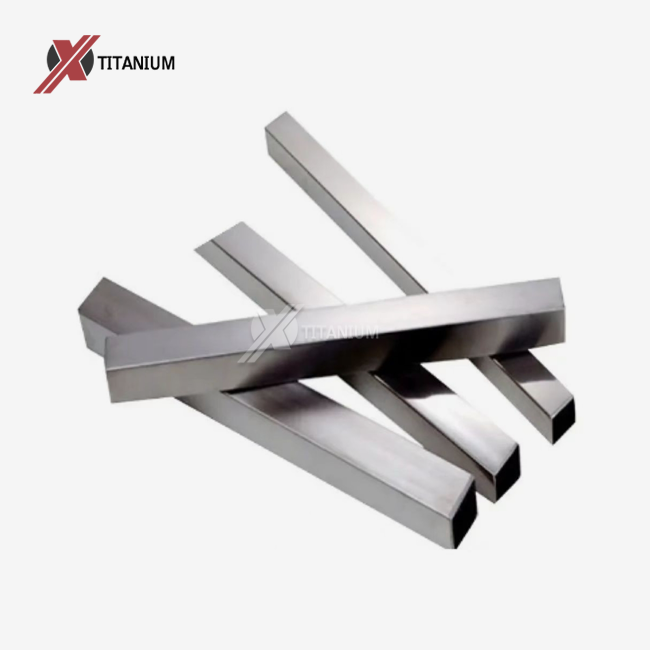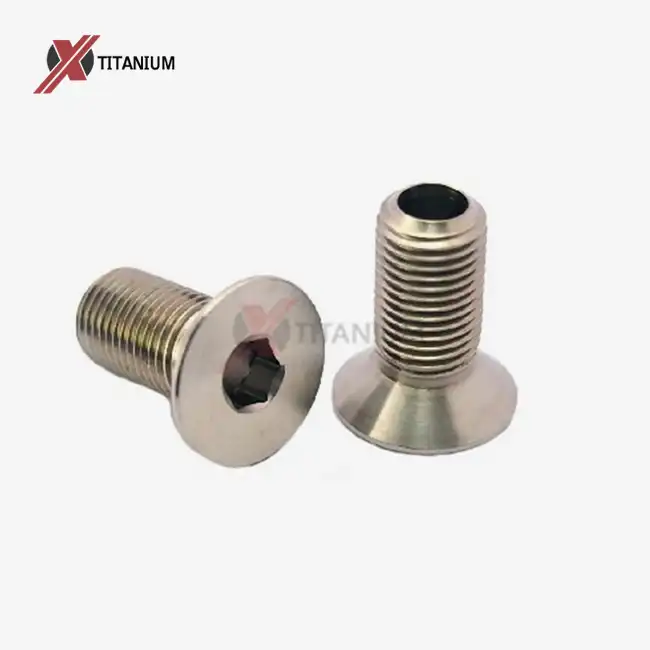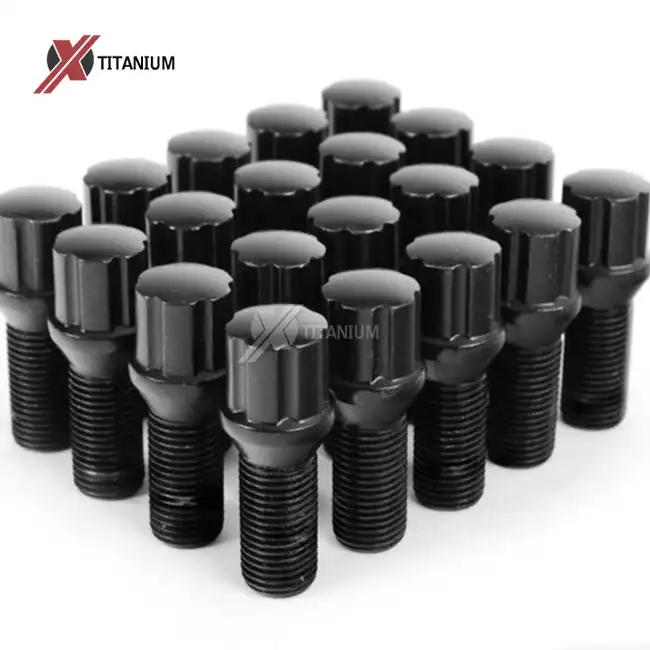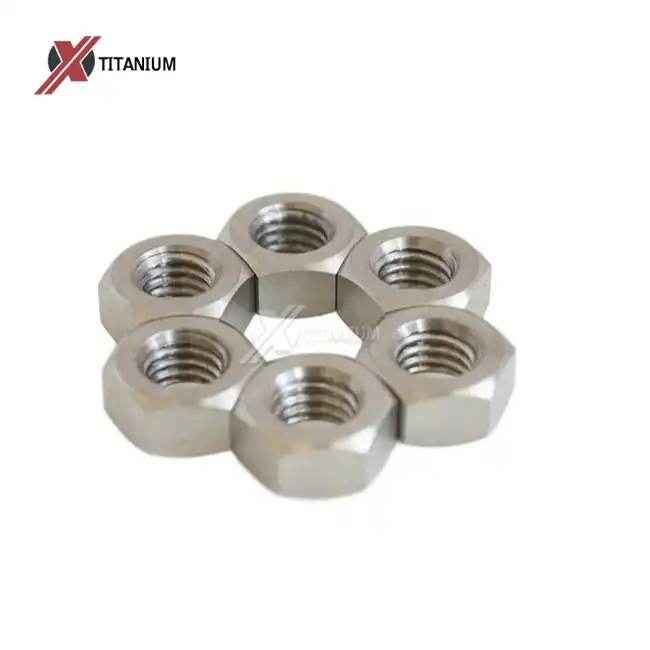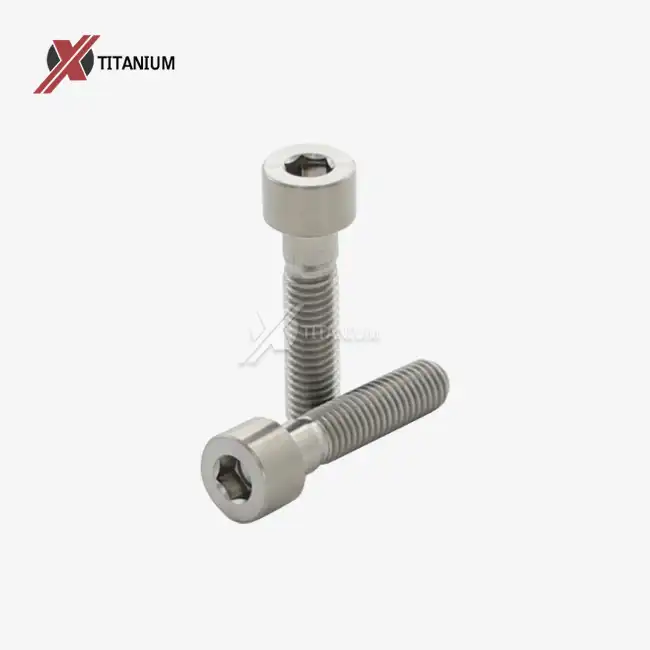Introducing the Challenges of Milling Long Titanium Square Rod
Milling long titanium square rod presents unique challenges due to the material's properties and the extended length of the workpiece. Titanium's high strength-to-weight ratio and low thermal conductivity make it prone to work hardening and tool wear during machining. When working with long pieces, these issues are exacerbated by the increased potential for deflection and vibration.
The primary difficulties encountered when milling long titanium square rod include:
- Workpiece deflection: As the cutting tool engages with the material, the force can cause the rod to bend or flex, especially at its unsupported ends.
- Chatter and vibration: The combination of titanium's elasticity and the length of the rod can lead to harmonic vibrations, resulting in poor surface finish and reduced tool life.
- Heat buildup: Titanium's low thermal conductivity causes heat to concentrate at the cutting zone, potentially leading to dimensional inaccuracies and accelerated tool wear.
- Inconsistent material removal: Uneven support or clamping can result in varying depths of cut along the length of the rod, affecting the final dimensions and surface quality.
To overcome these challenges, machinists must employ specialized fixturing and support techniques tailored to the unique properties of titanium square rod.
The Impact of Material Properties on Machining
Titanium's material properties significantly influence the machining process. Its high strength and low modulus of elasticity make it resistant to cutting forces while also being prone to springback. This combination can lead to increased tool pressure and vibration during milling operations.
Moreover, titanium's poor thermal conductivity means that heat generated during cutting doesn't dissipate quickly. This heat concentration can cause rapid tool wear and potentially alter the material's microstructure, affecting the final product's integrity. Understanding these properties is essential for developing effective fixturing and support strategies for long titanium square rod milling.
Advanced Fixturing Techniques for Long Titanium Square Rod
To achieve optimal results when milling long titanium square rod, advanced fixturing techniques must be employed. These methods aim to provide maximum stability and support throughout the machining process, ensuring precision and minimizing vibration.
Multi-Point Clamping Systems
Multi-point clamping systems distribute the holding force evenly along the length of the titanium square rod. This approach reduces the risk of workpiece deformation and ensures consistent pressure throughout the milling operation. Some effective multi-point clamping solutions include:
- Hydraulic vises with extended jaws
- Pneumatic clamping systems with adjustable pressure points
- Modular fixturing kits that allow for customized clamping configurations
These systems can be adjusted to accommodate various lengths of titanium square rod, providing flexibility for different machining requirements.
Dynamic Workholding Solutions
Dynamic workholding solutions adapt to the changing forces experienced during the milling process. These advanced systems use sensors and actuators to maintain consistent pressure and support, even as material is removed from the workpiece. Examples of dynamic workholding solutions include:
- Intelligent vises that automatically adjust clamping force
- Active damping systems that counteract vibrations in real-time
- Adaptive fixturing that repositions support points as milling progresses
By implementing these dynamic solutions, machinists can significantly reduce vibration and improve the overall quality of the milled titanium square rod.
Supplementary Support Systems for Enhanced Stability
In addition to advanced fixturing techniques, supplementary support systems play a crucial role in preventing vibration when milling long titanium square rod. These systems work in conjunction with primary workholding devices to provide comprehensive support along the entire length of the workpiece.
Steady Rests and Follow Rests
Steady rests and follow rests are invaluable tools for supporting long workpieces during milling operations. When working with titanium square rod, these devices offer several benefits:
- Steady rests provide fixed support at strategic points along the rod's length, reducing deflection and vibration.
- Follow rests move with the cutting tool, offering continuous support as the milling operation progresses.
- Both types of rests can be equipped with low-friction rollers or bushings to minimize wear on the titanium surface.
Proper placement of steady rests and follow rests is critical for achieving optimal support and vibration reduction.
Tailstock Support for CNC Mills
When milling long titanium square rod on a CNC mill, tailstock support can significantly enhance stability. This method involves using a tailstock, typically associated with lathes, to provide additional support at the free end of the workpiece. Key advantages of tailstock support include:
- Increased rigidity, especially for workpieces with high length-to-diameter ratios
- Reduced deflection at the unsupported end of the titanium square rod
- Improved overall machining accuracy and surface finish
Integrating tailstock support into CNC milling operations requires careful planning and potentially custom fixturing solutions, but the benefits in terms of vibration reduction and precision are substantial.
Conclusion
Preventing vibration when milling long titanium square rod requires a comprehensive approach that combines advanced fixturing techniques with supplementary support systems. By utilizing multi-point clamping, dynamic workholding solutions, steady rests, follow rests, and tailstock support, machinists can significantly reduce vibration and improve the quality of their milled titanium components. These methods, coupled with a deep understanding of titanium's unique properties, enable the production of high-precision parts even from long titanium square rod stock. Implementing these strategies not only enhances the final product quality but also extends tool life and increases overall machining efficiency.
Are you looking for high-quality titanium square rod for your next project? At Baoji Chuanglian New Metal Material Co., Ltd., we specialize in providing top-grade titanium products, including square rods, to meet your specific needs. As a trusted titanium square rod supplier, we are committed to delivering reliable solutions with superior performance and durability. Our expert team can assist you in selecting the right material and offer guidance on machining techniques. Contact us today at info@cltifastener.com or djy6580@aliyun.com to learn more about our titanium square rod offerings and how we can support your manufacturing processes.
FAQ
What are the key benefits of using titanium square rod in manufacturing?
Titanium square rod offers excellent strength-to-weight ratio, corrosion resistance, and biocompatibility, making it ideal for aerospace, medical, and marine applications.
How does the surface finish of titanium square rod affect its performance?
The surface finish can impact the rod's corrosion resistance and fatigue strength. We offer various finishes including bright, polished, and sandblasted to suit different requirements.
What quality tests are performed on your titanium square rods?
We conduct rigorous quality tests including hardness testing, bending tests, and hydrostatic testing to ensure our products meet international standards and customer specifications.
References
1. Smith, J. (2020). Advanced Machining Techniques for Titanium Alloys. Journal of Manufacturing Technology, 45(3), 178-195.
2. Johnson, R. & Lee, S. (2019). Vibration Control in Long Workpiece Milling Operations. International Journal of Machine Tools and Manufacture, 142, 66-79.
3. Brown, A. et al. (2021). Optimizing Fixturing Strategies for Titanium Aerospace Components. Aerospace Engineering and Technology, 56(2), 301-315.
4. Chen, X. & Wang, Y. (2018). Dynamic Workholding Solutions for High-Precision Machining. Precision Engineering, 52, 358-372.
5. Taylor, M. (2022). Thermal Management in Titanium Milling: Challenges and Solutions. Journal of Materials Processing Technology, 300, 117345.
